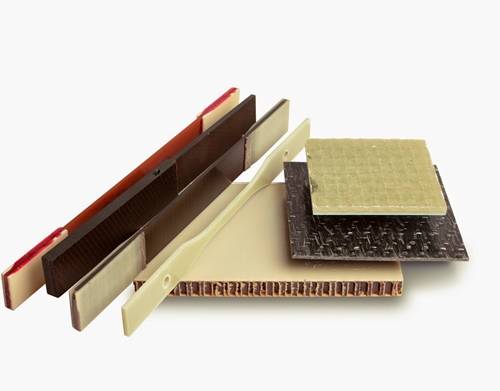Thermoset polymers are polymers that are cured into a solid form and cannot be returned to their original uncured form. Composites made with thermoset matrices are strong and have very good fatigue strength. They are extremely brittle and have low impact-toughness making. They are commonly used for high-heat applications because the thermoset matrix doesn’t melt like thermoplastics. Thermoset composites are generally cheaper and easier to produce because the liquid resin is very easy to work with. Thermoset composites are very difficult to recycle because the thermoset cannot be remolded or reshaped; only the reinforcing fiber used can be reclaimed.

Thermoplastic polymers are polymers that can be molded, melted, and remolded without altering its physical properties. Thermoplastic matrix composites are tougher and less brittle than thermosets, with very good impact resistance and damage tolerance. Since the matrix can be melted the composite materials are easier to repair and can be remolded and recycled easily. Thermoplastic composites are less dense than thermosets making them a viable alternative for weight critical applications. The thermoplastic composites manufacturing process is more energy intensive due to the high temperatures and pressures needed to melt the plastic and impregnate fibers with the matrix. The energy required makes thermoplastic composites more costly than thermosets.
These two similar materials have such different properties that both will continue to be used in different applications for very different reasons and the products of the future will likely be a combination of both.